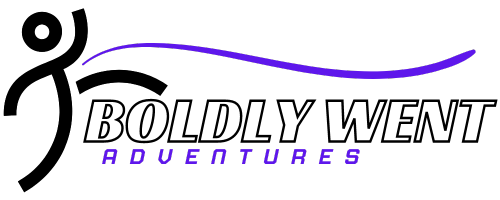
Filing for bankruptcy is a significant decision with lasting financial and legal impacts. If you are considering this path, understanding which debts are eligible and which are excluded is essential.
Not all financial obligations can be erased by bankruptcy, and mistakes or misunderstandings can create challenges down the line. This guide breaks down bankruptcy rules, eligible debts, and common exclusions, and offers practical advice for anyone weighing their options.
Understanding Bankruptcy and Types of Debts
Bankruptcy is a formal process that can help individuals overwhelmed by debt find relief. But bankruptcy rules are strict about the types of debt it covers. To proceed confidently, it’s important to know the distinction between eligible debts and those that are excluded.
Secured vs. Unsecured Debts
Before you file, identify your debts as either secured or unsecured.
- Secured debts are tied to specific assets, like mortgages or car loans. The lender has the right to reclaim or repossess the asset if you default.
- Unsecured debts have no collateral. Common examples are credit cards, medical bills, and personal loans.
Bankruptcy handles these categories differently, affecting whether you retain assets or are discharged from personal liability.
Consumer vs. Non-Consumer Debts
- Consumer debts cover personal, household, or family expenses.
- Non-consumer (business) debts are linked to operating a business.
Bankruptcy can treat these debts differently. Consumer debts generally make up the majority of individual filings.
Debts Commonly Eligible for Discharge in Bankruptcy
When individuals think about filing, they often assume all their financial burdens will be wiped away. While bankruptcy brings substantial relief, it covers specific types of debt.
Credit Cards and Lines of Credit
Most unsecured loans—including credit cards and lines of credit—are typically eligible debts. These are the kinds of financial products that lead many to bankruptcy in the first place. Bankruptcy can discharge outstanding balances, including late fees and over-limit charges.
Medical Bills and Utility Arrears
Unpaid medical bills and overdue utility payments generally qualify for discharge. For many, especially in countries lacking public healthcare, these debts can be substantial.
Personal Loans and Payday Loans
Personal, payday and certain installment loans not linked to collateral generally meet the criteria for discharge during bankruptcy proceedings.
Certain Tax Debts (in Limited Cases)
Some tax obligations may also qualify, but the rules vary. For example, only income taxes that meet specific criteria, such as being several years old and properly filed with tax authorities, might be included.
Debts Usually Excluded from Bankruptcy Discharge
Not all financial obligations disappear with bankruptcy. Knowing the main debt exclusions prevents surprises after the process is complete.
Secured Loans Where You Keep the Asset
If you decide to keep your house or financed car, you must continue payments. Bankruptcy may not erase these obligations unless you surrender the property.
Child Support and Alimony
Obligations like child support and spousal maintenance cannot be included. Courts consider these payments essential for dependents’ stability.
Court Fines and Penalties
Fines and penalties resulting from criminal activity or civil infractions are rarely, if ever, discharged in bankruptcy.
Student Loans
Student debt is often excluded unless you can prove “undue hardship,” which usually requires a separate court application and is rarely granted.
How Bankruptcy Affects Secured Debt
Understanding the relationship between bankruptcy and your secured loans is crucial for making an informed decision.
Mortgage Debt
If you own a home with an unpaid mortgage, you have two primary options:
- Keep the home: Continue your mortgage payments, even after bankruptcy.
- Surrender the home: Bankruptcy may discharge your liability for the remaining mortgage balance if you give up the property.
Auto Loans
Auto loans work similarly to mortgages. Surrender the vehicle to discharge liability, or keep up with payments to retain possession.
Reaffirmation Agreements
Sometimes, debtors choose to “reaffirm” specific secured debts, agreeing to continue responsibility even after other debts are wiped out. Be aware that reaffirmation is binding and removes the protections bankruptcy would otherwise offer on that particular loan.
Special Considerations for Tax Debts
Tax debts have unique rules that vary by jurisdiction. Typically, they are only included if they:
- Are income tax debts (not penalties or payroll taxes)
- Are for a return due at least three years ago
- Were filed at least two years before the bankruptcy
- Were assessed at least 240 days before filing
If your situation involves significant tax issues, seek licensed trustee advice before proceeding.
Filing for Bankruptcy and Getting Professional Guidance
Bankruptcy rules can be complex and easy to misinterpret. Filing incorrectly can lead to irreversible decisions, loss of property, or continued liability for non-eligible debts.
Consulting a Licensed Insolvency Trustee
A licensed trustee can review your situation and confirm the eligibility of your debts. They’re qualified to provide debt solution recommendations, explain legal obligations, and guide you through every step.
Steps to Get Started
- Create a list of all your debts, noting amounts, creditors, and whether they’re secured.
- Research local bankruptcy rules and recent legal changes.
- Schedule a meeting with a licensed trustee to review your options.
- Consider alternatives like consumer proposals or debt consolidation.
Exploring Your Options Starts with the Right Information
Filing for bankruptcy carries serious consequences, but it can also provide a powerful reset for those overwhelmed by debt. By understanding which debts are eligible for discharge and which are excluded, you empower yourself to make smarter financial decisions.
If you’re considering bankruptcy or want more detail on what debts can and can’t be cleared, click here to connect with a licensed trustee. Understanding your options is the first step toward regaining financial stability.
Last modified: May 12, 2025








